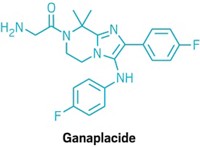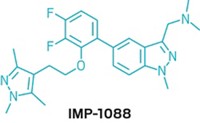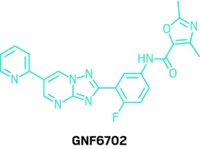Advertisement
Grab your lab coat. Let's get started
Welcome!
Welcome!
Create an account below to get 6 C&EN articles per month, receive newsletters and more - all free.
It seems this is your first time logging in online. Please enter the following information to continue.
As an ACS member you automatically get access to this site. All we need is few more details to create your reading experience.
Not you? Sign in with a different account.
Not you? Sign in with a different account.
ERROR 1
ERROR 1
ERROR 2
ERROR 2
ERROR 2
ERROR 2
ERROR 2
Password and Confirm password must match.
If you have an ACS member number, please enter it here so we can link this account to your membership. (optional)
ERROR 2
ACS values your privacy. By submitting your information, you are gaining access to C&EN and subscribing to our weekly newsletter. We use the information you provide to make your reading experience better, and we will never sell your data to third party members.
Pharmaceuticals
Pharmaceuticals: Antimalaria Drug Candidate Cures Mice In One Dose
by Sophie L. Rovner
September 6, 2010
| A version of this story appeared in
Volume 88, Issue 36
The parasites that cause malaria are developing resistance to the current generation of antimalarial drugs, so researchers are continually hunting for new treatments. Now, a team of investigators has discovered a compound that cures mice of malaria in a single dose (Science 2010, 329, 1175).
Led by Elizabeth A. Winzeler, a cell biologist at Scripps Research Institute; and Thierry T. Diagana, malaria program head at the Novartis Institute of Tropical Diseases, in Singapore, the team developed the drug by screening a library of 12,000 compounds and then creating derivatives of the most promising candidate. On the basis of tests of those derivatives, the investigators have zeroed in on one compound, a spiroindolone known as NITD609. If safety and pharmacological studies are successful, they hope to start Phase I clinical trials later this year.
The compound “appears to target a parasite protein not attacked by any existing malaria drug,” says Anthony S. Fauci, director of the National Institute of Allergy & Infectious Diseases, which helped fund the research.
The researchers determined that NITD609 rapidly blocks protein synthesis in malaria parasites, apparently by inhibiting the gene for an adenosine triphosphatase that transports cations through the malarial cell membrane. The fact that the agent acts by a different mechanism from other antimalarial drugs may explain why it’s effective against drug-resistant malaria strains, as the team has shown. It also appears to have a favorable safety profile. These results offer hope for treating malaria, which kills nearly 1 million people each year.






Join the conversation
Contact the reporter
Submit a Letter to the Editor for publication
Engage with us on Twitter